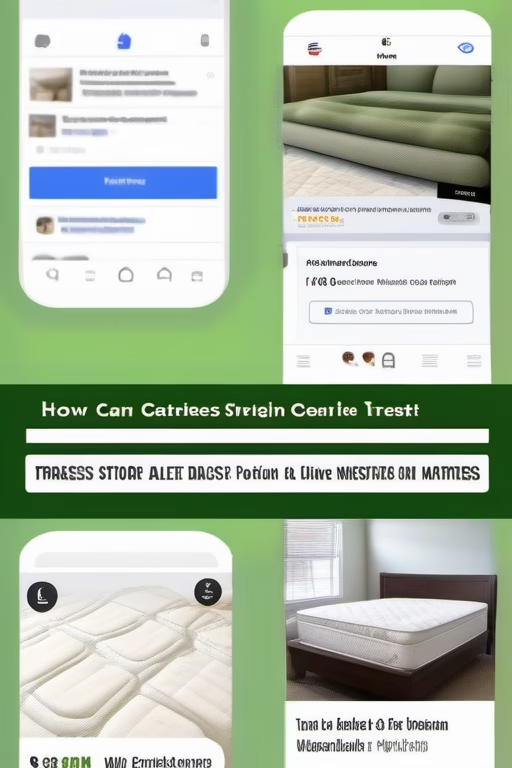How to Sell More E-Commerce Products with SEO: Ranking on Google & Amazon
Your Ultimate Organic Traffic & Sales Guide by Market Wiz
Table of Contents
- Introduction: SEO’s Role in E-Commerce Growth
- 1. Why SEO Beats Paid Ads for E-Commerce
- 1.1 Sustainable, Long-Term Traffic
- 1.2 Trust & Authority Signals
- 2. Keyword Research & Strategy
- 2.1 Product & Category Keywords
- 2.2 Buyer Intent & Long‑Tail Phrases
- 2.3 Amazon-Specific Keyword Tools
- 3. On‑Page Optimization for Google
- 3.1 Title Tags & Meta Descriptions
- 3.2 Header Structure & Unique Descriptions
- 3.3 Image Alt Tags & Rich Snippets
- 4. Amazon SEO Essentials
- 4.1 Optimizing Product Titles & Bullet Points
- 4.2 Backend Search Terms & A+ Content
- 4.3 Reviews & Sales Velocity
- 5. Technical SEO Best Practices
- 5.1 Site Speed & Mobile Responsiveness
- 5.2 Structured Data & Breadcrumbs
- 5.3 HTTPS & URL Structure
- 6. Content Marketing & Link Building
- 6.1 Buyer Guides & Comparison Posts
- 6.2 User-Generated Content & Reviews
- 6.3 Outreach & Authority Links
- 7. Conversion Rate Optimization
- 7.1 Site Navigation & Search Filters
- 7.2 Product Page UX & Trust Elements
- 7.3 A/B Testing & Analytics
- 8. Analytics & Reporting
- 8.1 Google Analytics E-Commerce Tracking
- 8.2 Search Console & Keyword Insights
- 8.3 KPI Dashboards for ROI
- 9. Essential SEO Tools & Extensions
- 10. Case Studies: Google & Amazon Wins
- Conclusion & Next Steps
- 25 FAQs
- 25 Extra Keywords
Introduction: SEO’s Role in E-Commerce Growth
In a crowded online marketplace, relying solely on ads can be costly and short‑lived. SEO—when done right—positions your store and your Amazon listings at the top of search results, driving consistent, high‑intent traffic. Whether shoppers start on Google or Amazon, a robust SEO strategy ensures your products are the first they see. Let’s explore how to optimize for both platforms.
1. Why SEO Beats Paid Ads for E-Commerce
1.1 Sustainable, Long-Term Traffic
Organic rankings deliver traffic 24/7 without per‑click costs. Over time, high‑ranked pages continue to attract buyers long after initial optimization.
1.2 Trust & Authority Signals
Shoppers trust organic listings more than ads. Ranking at the top signals credibility, resulting in higher click‑through and conversion rates.
2. Keyword Research & Strategy
2.1 Product & Category Keywords
Identify high‑volume terms for your core products (e.g., “wireless noise‑canceling headphones”) and categories (“best gaming headset”). Use tools like Ahrefs, SEMrush, and Amazon’s auto‑suggest.
2.2 Buyer Intent & Long‑Tail Phrases
Target informational and transactional phrases—“headphones with mic for Zoom” or “best budget gaming headset under $50”—to capture different intent stages.
2.3 Amazon-Specific Keyword Tools
Leverage Helium 10, Jungle Scout, or MerchantWords to uncover high‑traffic Amazon search terms and fill your backend search fields.
3. On‑Page Optimization for Google
3.1 Title Tags & Meta Descriptions
Craft unique, keyword‑rich titles under 60 characters and engaging meta descriptions that highlight USP—free shipping, warranty, top reviews.
3.2 Header Structure & Unique Descriptions
Use H1 for product name, H2s for key features and benefits, and avoid manufacturer‑provided copy—write original descriptions to rank higher.
3.3 Image Alt Tags & Rich Snippets
Optimize alt text with primary keywords (“black wireless gaming headset”), and implement Product schema to display price, availability, and reviews in SERPs.
4. Amazon SEO Essentials
4.1 Optimizing Product Titles & Bullet Points
Include top keywords in title, brand, and model fields. Use bullet points to highlight features, materials, and benefits—this boosts relevance.
4.2 Backend Search Terms & A+ Content
Populate all backend search fields with secondary keywords and misspellings. Use A+ Content (Enhanced Brand Content) to add rich images and comparison charts.
4.3 Reviews & Sales Velocity
Encourage reviews through follow‑up emails and Amazon’s “Request a Review” button. Sales velocity signals relevance—run promotions to boost early sales.
5. Technical SEO Best Practices
5.1 Site Speed & Mobile Responsiveness
Compress images, minify CSS/JS, and use a responsive theme—mobile users account for over 60% of e‑commerce traffic.
5.2 Structured Data & Breadcrumbs
Implement Product, Offer, and BreadcrumbList schema to enable rich results and improve crawl efficiency.
5.3 HTTPS & URL Structure
Ensure site-wide HTTPS and clean, keyword‑rich URLs (e.g., /headphones/wireless-gaming) for better indexing and user experience.
6. Content Marketing & Link Building
6.1 Buyer Guides & Comparison Posts
Publish “Best Gaming Headsets 2025” or “Wireless vs. Wired Headphones” to capture research traffic and earn backlinks.
6.2 User-Generated Content & Reviews
Enable customer photo/video reviews and Q&A sections—fresh content and engagement boost on-site SEO.
6.3 Outreach & Authority Links
Partner with tech blogs and influencers for guest posts and product reviews—quality backlinks drive authority and referral traffic.
7. Conversion Rate Optimization
7.1 Site Navigation & Search Filters
Use faceted navigation for brand, price, rating, and feature filters—help users find products quickly and boost engagement.
7.2 Product Page UX & Trust Elements
Display clear “Add to Cart,” “Buy Now” buttons, trust badges (SSL, money‑back guarantee), and real‑time stock levels.
7.3 A/B Testing & Analytics
Test headlines, CTAs, and images regularly. Use Google Optimize and Hotjar heatmaps to refine user experience.
8. Analytics & Reporting
8.1 Google Analytics E-Commerce Tracking
Enable Enhanced E-commerce to track product impressions, add‑to‑cart events, and checkout behavior for data‑driven decisions.
8.2 Search Console & Keyword Insights
Monitor query performance, CTR, and indexing issues. Identify new keyword opportunities from Search Console data.
8.3 KPI Dashboards for ROI
Build dashboards showing organic sessions, revenue attribution, and conversion rate to measure SEO ROI.
9. Essential SEO Tools & Extensions
- Ahrefs/SEMrush for keyword & backlink analysis
- Google PageSpeed Insights for performance checks
- Structured Data Testing Tool for schema validation
- Helium 10 or Jungle Scout for Amazon keywords
- Hotjar & Google Optimize for UX testing
10. Case Studies: Google & Amazon Wins
An electronics retailer boosted organic traffic 80% by launching in‑depth buyer guides and optimizing Product schema. An Amazon seller increased sales 120% in 3 months by refining backend search terms, improving bullet points, and leveraging early reviewer programs.
Conclusion & Next Steps
Mastering SEO across Google and Amazon requires a multi‑faceted approach: strategic keyword targeting, meticulous on‑page and technical optimizations, compelling content, and continuous testing. Begin by auditing your current SEO health, mapping keywords to pages, and optimizing your top‑selling products. With consistent effort and data‑driven refinements, you’ll drive sustainable organic traffic and skyrocket your e‑commerce sales.
25 Frequently Asked Questions
1. How long until I see SEO results?
Typically 3–6 months for meaningful ranking gains; quick wins possible with on‑page fixes.
2. Should I optimize for Google or Amazon first?
Assess your revenue split—if Amazon drives most sales, start there; otherwise, tackle Google SEO first.
3. How many keywords per product page?
Focus on one primary keyword and 2–4 secondary terms naturally integrated into title, bullets, and description.
4. What’s the top technical SEO factor?
Page speed and mobile responsiveness are critical—slow load times severely impact rankings and conversions.
5. Do I need schema markup?
Yes—Product, Offer, and Review schema help your listings stand out with rich snippets and improve CTR.
6. How often update Amazon listings?
Monthly—refresh titles, images, and backend terms based on performance data and seasonal trends.
7. Can I use manufacturer descriptions?
No—unique copy prevents duplicate content issues and differentiates your listings in search results.
8. How to get more reviews?
Use automated post‑purchase emails, insert review request cards in shipments, and utilize Amazon’s “Request a Review” feature.
9. What’s a good bounce rate?
Aim for under 40% on product pages—higher rates suggest UX or relevance issues.
10. How to track organic sales?
Use UTM tags for Google, and Amazon Attribution tags for Amazon to measure visit‑to‑sale attribution.
11. Should I blog on my e‑commerce site?
Yes—blogging about use cases, comparisons, and tips drives additional organic traffic and internal linking.
12. How to prevent cannibalization?
Map unique keywords to each page and consolidate similar products under one comprehensive listing when needed.
13. What’s the ideal title tag length?Under 60 characters for Google; Amazon titles can be up to 200 characters but front‑load key terms.14. How to optimize images?Compress for web, use descriptive file names and alt text, and include lifestyle shots for engagement.15. Can social media improve SEO?Indirectly—shares drive traffic and brand awareness, leading to backlinks and improved search signals.16. How to improve click‑through rate?Use compelling meta descriptions, highlight promotions, and implement review stars in SERPs.17. Should I use video on product pages?Absolutely—demo videos increase time on page and conversion rates.18. How to handle out‑of‑stock items?Keep pages live with an “email me when available” option and related product suggestions.19. How to do competitor analysis?Use Ahrefs or SEMrush to analyze their top keywords, backlink sources, and content gaps.20. What’s the first SEO step?Conduct a full site audit to identify technical, on‑page, and content opportunities.21. How to optimize for voice search?Include natural language Q&A in FAQ schema and concise answers to common questions.22. How often should I audit?Perform a comprehensive audit every 6 months and spot‑check key metrics monthly.23. Can I DIY e‑commerce SEO?Yes—with dedication and the right tools, but an expert can accelerate results and avoid pitfalls.24. How to measure ROI?Compare organic revenue and lead volume against time and tool investment over a 6–12 month period.25. How to stay ahead of trends?Follow industry blogs, monitor algorithm updates, and continually test new keywords and content formats.
15. Can social media improve SEO?Indirectly—shares drive traffic and brand awareness, leading to backlinks and improved search signals.16. How to improve click‑through rate?Use compelling meta descriptions, highlight promotions, and implement review stars in SERPs.17. Should I use video on product pages?Absolutely—demo videos increase time on page and conversion rates.18. How to handle out‑of‑stock items?Keep pages live with an “email me when available” option and related product suggestions.19. How to do competitor analysis?Use Ahrefs or SEMrush to analyze their top keywords, backlink sources, and content gaps.20. What’s the first SEO step?Conduct a full site audit to identify technical, on‑page, and content opportunities.21. How to optimize for voice search?Include natural language Q&A in FAQ schema and concise answers to common questions.22. How often should I audit?Perform a comprehensive audit every 6 months and spot‑check key metrics monthly.23. Can I DIY e‑commerce SEO?Yes—with dedication and the right tools, but an expert can accelerate results and avoid pitfalls.24. How to measure ROI?Compare organic revenue and lead volume against time and tool investment over a 6–12 month period.25. How to stay ahead of trends?Follow industry blogs, monitor algorithm updates, and continually test new keywords and content formats.
17. Should I use video on product pages?Absolutely—demo videos increase time on page and conversion rates.18. How to handle out‑of‑stock items?Keep pages live with an “email me when available” option and related product suggestions.19. How to do competitor analysis?Use Ahrefs or SEMrush to analyze their top keywords, backlink sources, and content gaps.20. What’s the first SEO step?Conduct a full site audit to identify technical, on‑page, and content opportunities.21. How to optimize for voice search?Include natural language Q&A in FAQ schema and concise answers to common questions.22. How often should I audit?Perform a comprehensive audit every 6 months and spot‑check key metrics monthly.23. Can I DIY e‑commerce SEO?Yes—with dedication and the right tools, but an expert can accelerate results and avoid pitfalls.24. How to measure ROI?Compare organic revenue and lead volume against time and tool investment over a 6–12 month period.25. How to stay ahead of trends?Follow industry blogs, monitor algorithm updates, and continually test new keywords and content formats.
19. How to do competitor analysis?Use Ahrefs or SEMrush to analyze their top keywords, backlink sources, and content gaps.20. What’s the first SEO step?Conduct a full site audit to identify technical, on‑page, and content opportunities.21. How to optimize for voice search?Include natural language Q&A in FAQ schema and concise answers to common questions.22. How often should I audit?Perform a comprehensive audit every 6 months and spot‑check key metrics monthly.23. Can I DIY e‑commerce SEO?Yes—with dedication and the right tools, but an expert can accelerate results and avoid pitfalls.24. How to measure ROI?Compare organic revenue and lead volume against time and tool investment over a 6–12 month period.25. How to stay ahead of trends?Follow industry blogs, monitor algorithm updates, and continually test new keywords and content formats.
21. How to optimize for voice search?Include natural language Q&A in FAQ schema and concise answers to common questions.22. How often should I audit?Perform a comprehensive audit every 6 months and spot‑check key metrics monthly.23. Can I DIY e‑commerce SEO?Yes—with dedication and the right tools, but an expert can accelerate results and avoid pitfalls.24. How to measure ROI?Compare organic revenue and lead volume against time and tool investment over a 6–12 month period.25. How to stay ahead of trends?Follow industry blogs, monitor algorithm updates, and continually test new keywords and content formats.
23. Can I DIY e‑commerce SEO?Yes—with dedication and the right tools, but an expert can accelerate results and avoid pitfalls.24. How to measure ROI?Compare organic revenue and lead volume against time and tool investment over a 6–12 month period.25. How to stay ahead of trends?Follow industry blogs, monitor algorithm updates, and continually test new keywords and content formats.
25. How to stay ahead of trends?Follow industry blogs, monitor algorithm updates, and continually test new keywords and content formats.
25 Extra Keywords
- e-commerce SEO strategy
- Amazon product ranking tips
- Google Shopping SEO
- long-tail product keywords
- optimized product descriptions
- rich snippets e-commerce
- Amazon A+ content SEO
- backend search terms Amazon
- structured data for products
- mobile SEO for online stores
- site speed e-commerce
- conversion optimization online shop
- user-generated reviews SEO
- product comparison guides
- tech spec infographics SEO
- SEO for Shopify stores
- SEO for WooCommerce
- voice search e-commerce
- image optimization e-commerce
- international SEO e-commerce
- local SEO multi-location store
- blogging for product sites
- link building online store
- analytics for e-commerce SEO
- Market Wiz e-commerce guide

















